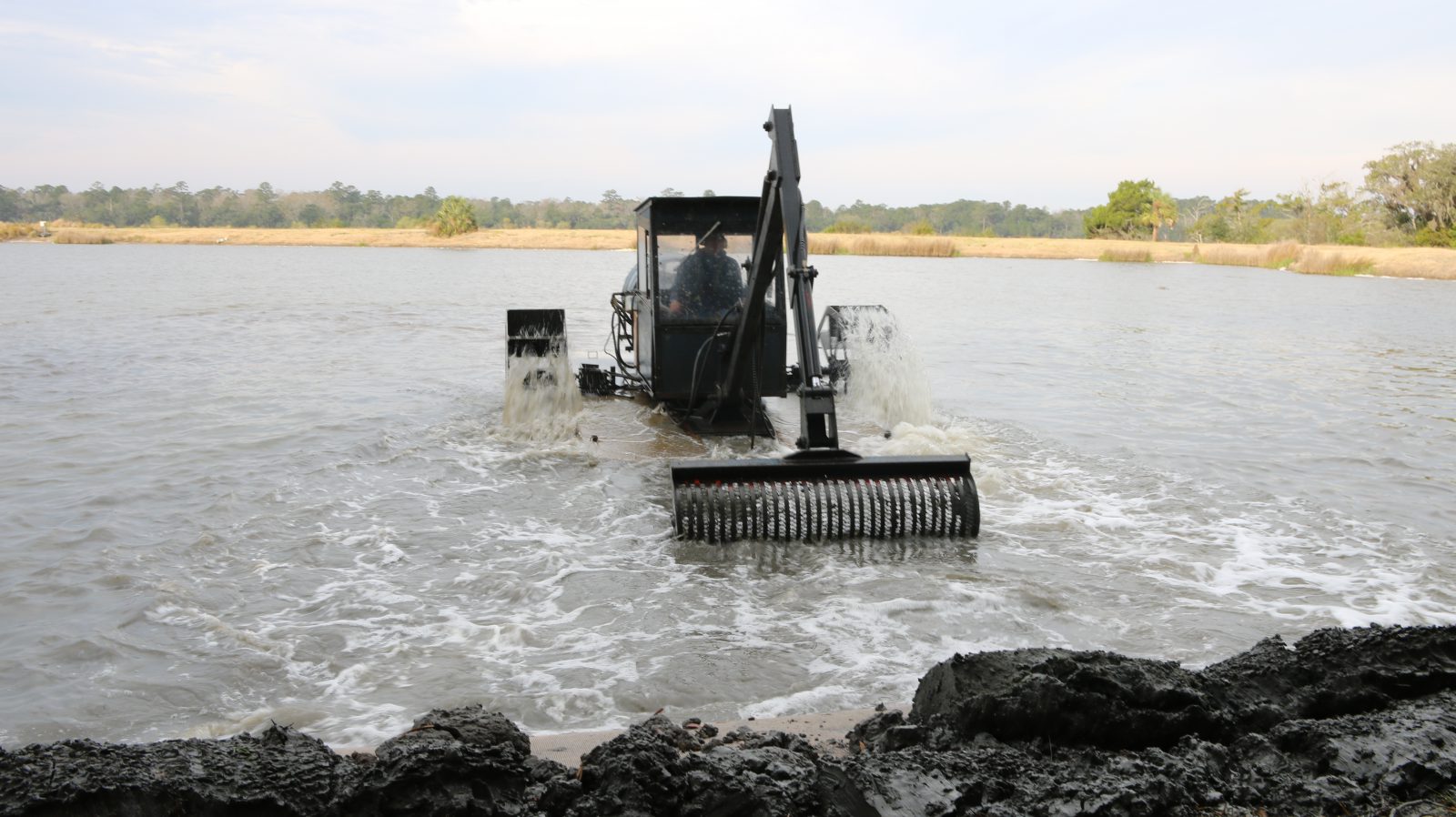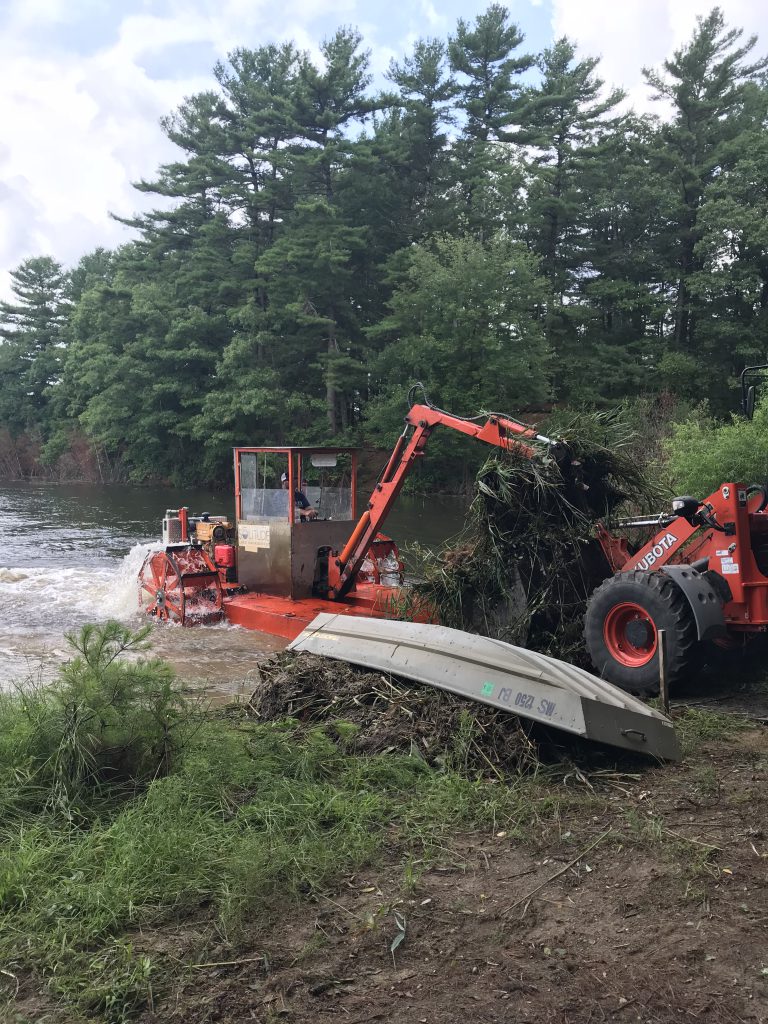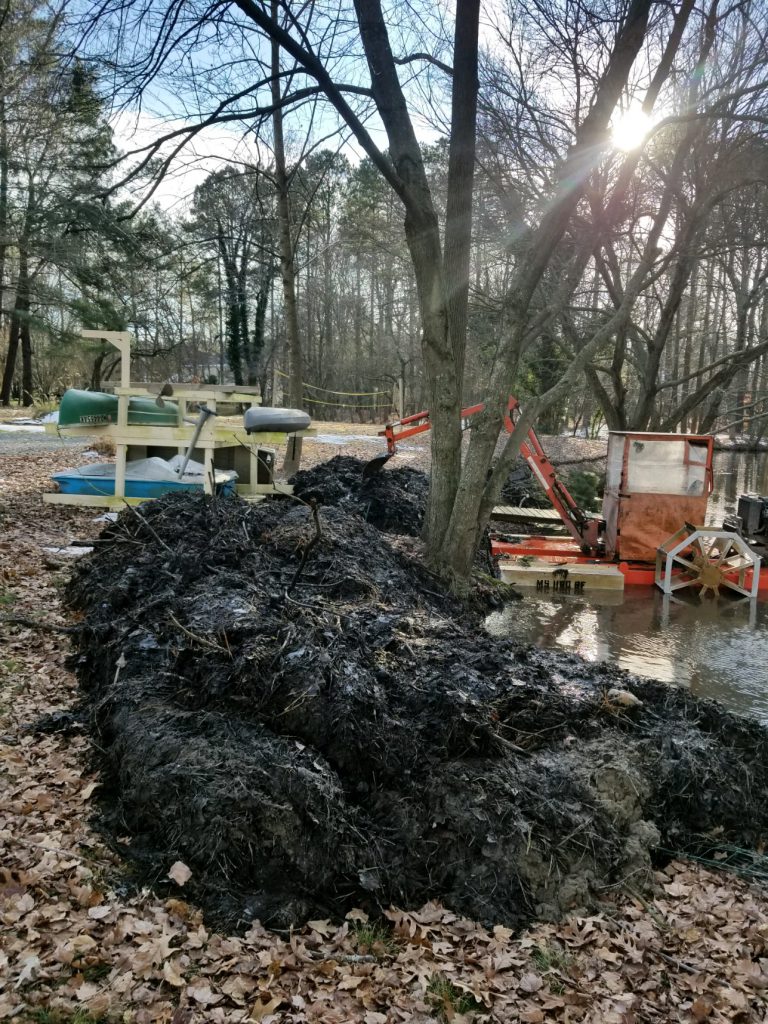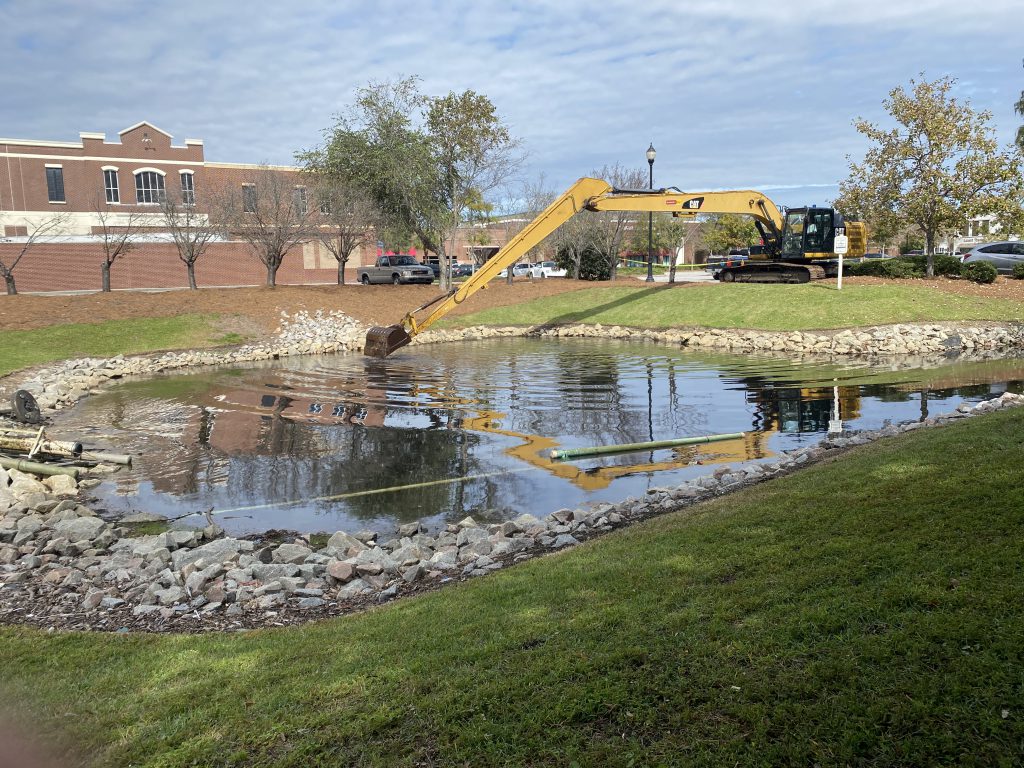
Remove Nuisance Aquatic Plants and Accumulated Muck with Hydro-raking
Whether you enjoy fishing, boating, or swimming, nearly everyone has a lasting memory that centers around a great experience at a lake or pond. Unfortunately, the effects of time can slowly alter the appearance of a waterbody until it no longer resembles the place you fondly remember. Just as you age, lakes and ponds have a lifespan that is dependent on many factors, including vegetation growth, muck buildup, and more. If it is not properly managed, a body of water will eventually fill in with organic materials until it is no more than a small puddle. Luckily, there are strategies available to help restore the longevity of your favorite lake or pond.
Hydro-raking is a tried and true solution to help restore mature waterbodies.
Hydro-rakes can operate in most bodies of water, including those as shallow as 18 inches, and up to depths of 10 feet. A hydro-rake is best described as a floating barge containing a mounted backhoe arm (boom and dipper) with a York rake attachment. These attachments are used to scoop organic materials out of the waterbody, with the ultimate goal of improving water quality, increasing water volume, reducing bad odors, and creating a healthier, more balanced aquatic ecosystem. Most often, this entails the removal of decaying organic matter, leaf litter, tree branches, nuisance or invasive plant species, and other debris from the waterbody.
Invasive Plant Removal
While native aquatic plants are often beneficial for lakes and ponds, the presence of certain nuisance and invasive species can cause the balance of an ecosystem to spiral out of control. Invasive milfoil, fanwort, and water chestnut, for instance, create dense mats in the water that block sunlight and exhaust dissolved oxygen. These invasive plants reproduce rapidly through both seed propagation and fragmentation. Native plants like cattails and water lilies can also be considered undesirable, depending on the extent of growth and the management goals for the waterbody. Lake and pond owners may utilize hydro-raking to physically remove nuisance and invasive plants. Depending on the undesirable plants present, a professional lake manager may recommend time frames throughout the year most conducive to plant removal via hydro-rake. An effective hydro-raking project will be completed at times when plant fragmentation is least likely in order to ensure lasting results.
Seasonal Control of Aquatic Weeds
A professional lake manager can design a hydro-raking plan that provides seasonal management of submersed plants and at least 2-3 years of management for floating leaf and emergent species. For particularly dense invasive species infestations, the strategic application of EPA-registered aquatic herbicides may also be necessary to ensure thorough management of the problematic plant. While hydro-raking serves as an effective management tool for the removal of rooted and submersed nuisance plant species, other species can be best managed with additional strategies, like mechanical harvesting, which targets algae and floating leaf plant species such as water hyacinth and giant salvinia.
Utilizing Hydro-raking to Restore Eroded Shorelines
Your waterbody does not need to be overrun with undesirable plants to experience the positive results of a hydro-raking project. Often, it is the best management solution for lakes and ponds containing thick bottom sludge or years of accumulated muck. A hydro-rake can collect up to 500 pounds of muck in each scoop and deposit it on the shore for off-site disposal. Or, the muck can be used to reshape crumbling shorelines using a patented bio-engineered shoreline system called SOX Solutions.
Removing Nutrient-Rich Organic Muck
The removal of this muck can be a critical turning point for a lake or pond suffering from poor water quality, bad odors, flooding issues, or nutrient pollution. As leaves, grass clippings, trash, and other debris are swept into a waterbody by runoff during rainstorms, they begin to decompose. This causes them to release unnaturally high levels of nutrients that fuel invasive plant infestations as well as Harmful Algal Blooms, which can produce dangerous toxins with suspected links to degenerative diseases like Parkinson’s, Alzheimer’s, and ALS.
The removal of this nutrient-rich organic material can prevent undesirable plant and algae growth while improving water quality and volume. Ultimately, the best method to ensure your lake or pond maintains its health is preventative management. Biological dredging, for instance, utilizes beneficial bacteria to naturally eliminate excess muck at the bottom of a waterbody. This management tool is excellent for lakes and ponds in need of minor spot dredging or upkeep. Other proactive strategies aimed at reducing muck build-up and nutrient loading include buffer management, nutrient remediation, and aeration tools.
Restoring Depth in Aging Waterbodies
Hydro-raking can be extremely effective at removing plant matter, organic material, and debris, but mechanical dredging or hydraulic dredging can serve as transformative solutions that will increase depths and remove plant fragments, sediment, and other debris from the site. Though typically thought of as costly and more disruptive, dredging is often the best approach for lakes and ponds that have been neglected or misused for long periods of time. And with the help of bathymetric mapping technology, your lake management professional can help you quantify the rate of sedimentation and predict when dredging will eventually need to take place. With this information, you can better budget for and strategize your future dredging project. It’s never too early—or late—to begin implementing strategies that restore your waterbody for lasting beauty and enjoyment for years to come!
What Is Hydro-raking?
SOLitude Lake Management is a nationwide environmental firm committed to providing sustainable solutions that improve water quality, enhance beauty, preserve natural resources and reduce our environmental footprint. SOLitude’s team of aquatic resource management professionals specializes in the development and execution of customized lake, pond, wetland, and fisheries management programs that include water quality testing and restoration, nutrient remediation, algae, and aquatic weed control, installation and maintenance of fountains and aeration systems, bathymetry, shoreline erosion restoration, mechanical harvesting and hydro-raking, lake vegetation studies, biological assessments, habitat evaluations, and invasive species management. Services and educational resources are available to clients nationwide, including homeowners associations, multi-family and apartment communities, golf courses, commercial developments, ranches, private landowners, reservoirs, recreational and public lakes, municipalities, drinking water authorities, parks, and state and federal agencies. SOLitude Lake Management is a proud member of the Rentokil Steritech family of companies in North America.















